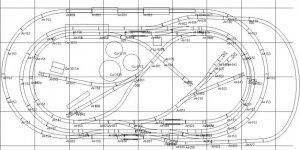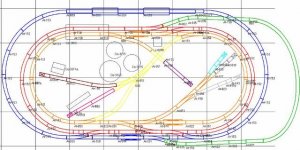Best way to wire this layout?
I've chosen this layout to build, but, there isn't any details on placement for power terminals and insulators, nor any info on how to wire the switches.
So, Here's what I'm looking for. I'm looking to wire this system for NON DCC operation with the ability to upgrade it in the future to DCC (without having to re-do my insulators and terminals).. Also, I would like to know, when it's appropriate to use a Snap-Relay with the Snap-Switches..
Note: Someone in this forum has built this layout as that's were I got the original from, but, I plan on making the scenery completely different including having a small river run through the layout. This layout is probably more than a newbie needs to start out with, but, I'm ambitious.
I've chosen this layout to build, but, there isn't any details on placement for power terminals and insulators, nor any info on how to wire the switches.
So, Here's what I'm looking for. I'm looking to wire this system for NON DCC operation with the ability to upgrade it in the future to DCC (without having to re-do my insulators and terminals).. Also, I would like to know, when it's appropriate to use a Snap-Relay with the Snap-Switches..
Note: Someone in this forum has built this layout as that's were I got the original from, but, I plan on making the scenery completely different including having a small river run through the layout. This layout is probably more than a newbie needs to start out with, but, I'm ambitious.




